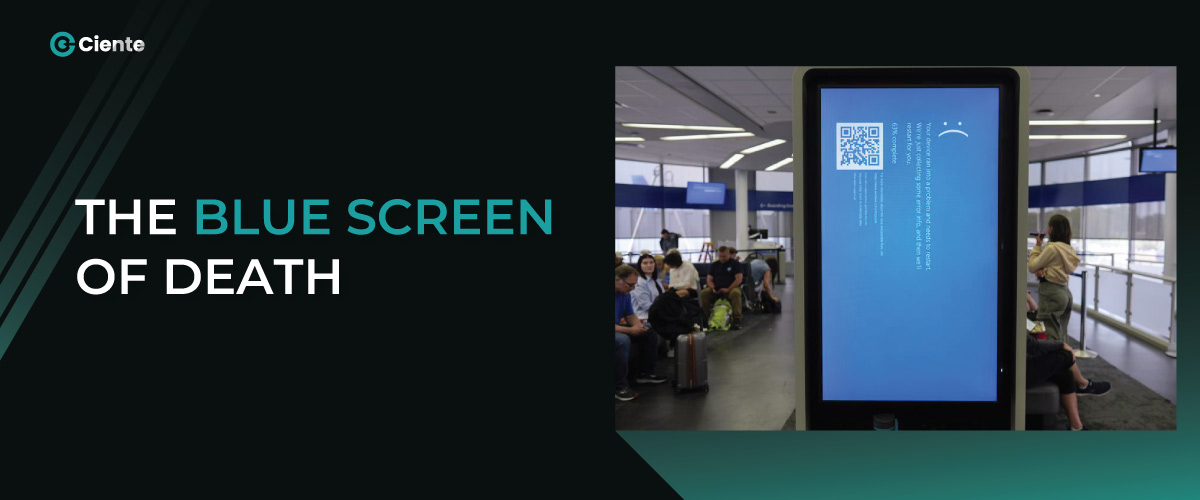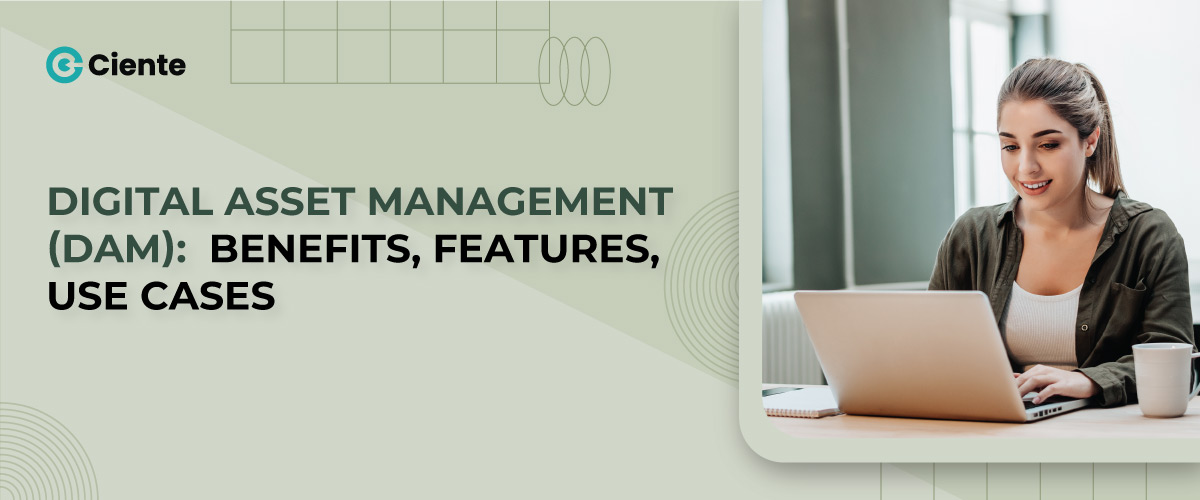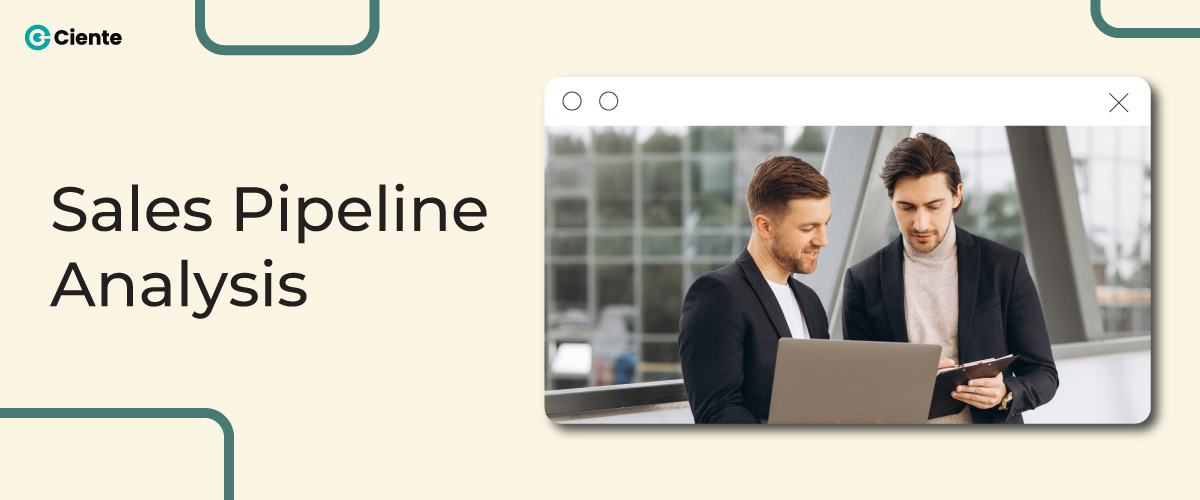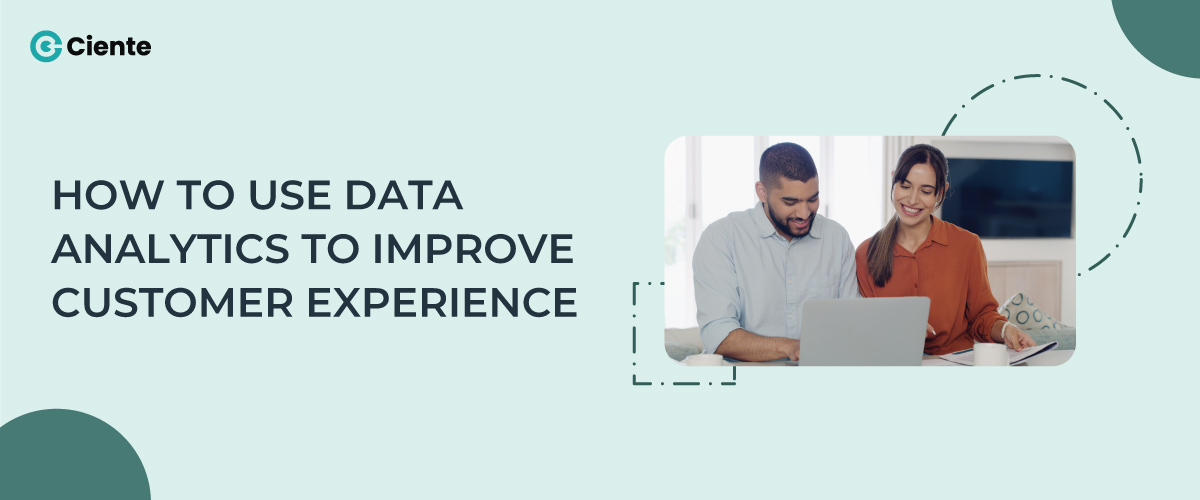Want to stand out in the market? Explore how demand generation channels can help businesses amplify their reach and impact for a sharper market focus.
In today’s evolving landscape, demand generation requires a strategic blend of channels to effectively engage target audiences and drive product/service demand. By understanding market dynamics and consumer behaviors, businesses can tailor their approach to reach and attract high-quality leads. Analyzing trends, setting clear goals, and creating compelling content across various channels such as social media and email marketing are key to nurturing leads and converting interest into action. Demand generation encompasses more than just lead generation; it involves creating awareness, building engagement, increasing traffic, and ultimately converting leads into customers.
Why Demand Generation Channels Matter
Creating consumer demand: Demand generation channels help create consumer demand for products or services by generating interest, building excitement, and getting noticed through various marketing tactics.
Driving awareness: Demand generation focuses on driving awareness primarily through inbound methods, which helps in increasing brand awareness and getting noticed by a wider audience.
Generating leads: By creating awareness and generating interest, demand generation channels help generate leads, which can be captured through lead generation strategies.
Building relationships: Demand generation channels help in building relationships with customers by connecting with them in a relevant way and improving customer loyalty.
Multi-channel marketing: Utilizing multiple channels simultaneously, such as email, social media, and website traffic, can further enhance demand generation efforts by reaching a wider audience and building stronger relationships with customers.
Complementing lead generation: Demand generation and lead generation work together to drive attention, buzz, and traffic and eventually convert leads into customers.
Top 6 Demand Generation Channels
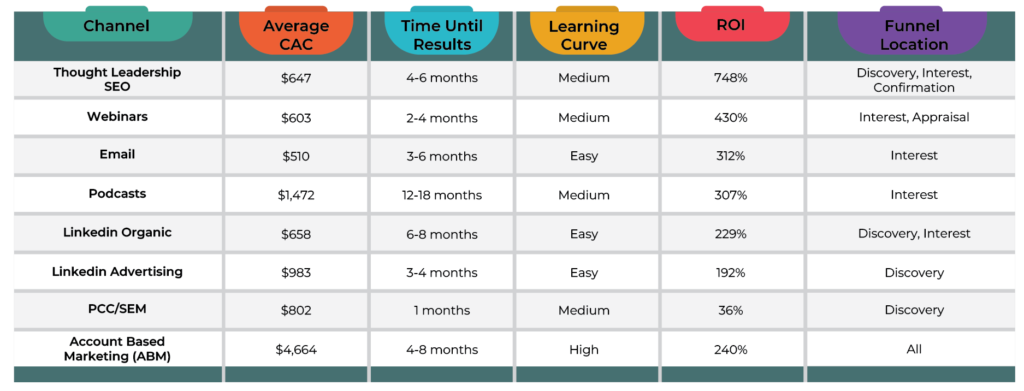
SEO & Social Media
What is it?
SEO and social media are interconnected digital marketing strategies that can work together to enhance online visibility and engagement. Social SEO involves optimizing social profiles and content to improve search result rankings, making it easier for people searching for similar businesses to find your brand. While SEO focuses on improving website visibility in search engines like Google, social media management involves engaging with audiences on platforms like Facebook, Twitter, and Instagram. By integrating SEO and social media strategies, businesses can maximize their online presence, attract more traffic, and build brand credibility across different digital channels.
Funnel Stage
- The Top of Funnel (Awareness): This stage in SEO and social media aims to attract new potential customers who are unaware of your brand. SEO involves targeting specific customer needs with longer-tailed phrases. In social media, the focus is on creating brand awareness and trust through messaging that resonates with a broad audience. This stage sets the foundation for building familiarity and connecting with potential customers.
Pain Points Solved
- Low Brand Awareness: Utilizing SEO and social media strategies can significantly boost brand visibility by optimizing profiles and content to attract more organic traffic.
- Difficulty Attracting Organic Traffic: Implementing SEO-driven social media optimization techniques can help in drawing organic traffic to the site, enhancing visibility on search engines.
Time to Results
- 6-12 Months: Achieving substantial results through SEO and social media optimization typically requires a longer-term approach, with improvements in brand awareness and organic traffic building gradually over this timeframe.
Buyer Journey Fit
- Attract & Educate: This channel aligns with the initial stages of the buyer’s journey, focusing on attracting potential customers and educating them about the brand, products, or services offered.
Channel Characteristics
- Organic: Emphasizes natural growth through optimized content and profiles rather than paid advertising.
- Long-Term Play: Results from SEO and social media efforts are cumulative and tend to show a more significant impact over time.
- Builds Trust & Credibility: By consistently optimizing content and engaging with the audience, trust and credibility are established, crucial for attracting and retaining customers.
Budget & Resources
- Medium (Content Creation, SEO Expertise): Requires a moderate investment in resources for creating quality content, implementing SEO strategies effectively, and maintaining a consistent presence on social media platforms to drive brand awareness and organic traffic growth.
Webinars
What is it?
A webinar is an online event where a speaker or a small group of speakers deliver a presentation to a large audience who can participate by submitting questions, responding to polls, and using interactive tools. It is a web-based seminar that allows individuals or groups to interact in real time, typically hosted via webinar software. Merriam-Webster defines a webinar as a live online educational presentation where participating viewers can submit questions and comments. In essence, a webinar is a virtual platform that enables interactive communication, education, training, and presentations over the internet to engage and inform a wide audience.
Funnel Stage
- The Mid-Funnel (Consideration): This stage in webinars focuses on providing deeper insights and detailed information to an audience that has shown interest and is more sales-ready. At this stage, the emphasis is on nurturing leads, presenting expertise in a promotional manner, and educating the audience about the solutions offered. The goal is to move potential customers further down the funnel by offering more specific information that addresses their needs and showcases how the solution can help. This stage bridges the gap between generating awareness and closing sales, aiming to convert interested leads into high-quality prospects.
Pain Points Solved
- Difficulty Generating Leads: This pain point refers to the challenge of attracting and engaging potential customers to participate in webinars, which can impact the success of the event and the conversion of leads into customers.
- Need for In-Depth Product Education: This pain point highlights the necessity for detailed and comprehensive product education during webinars to ensure that participants fully understand the features, benefits, and value of the products or services being presented.
Time to results
- 1-3 months: For webinars, the time to results typically ranges from 1 to 3 months. This timeframe encompasses the planning, promotion, execution, and follow-up stages of a webinar event, allowing for the generation of leads, engagement with the audience, and conversion of attendees into customers or clients.
Buyer Journey Fit
- Engage & educate: emphasizes the importance of using webinars to actively involve potential customers and provide them with valuable information to aid in their decision-making process. Webinars serve as a platform to engage audiences interactively, educate them about products or services, and build trust by addressing their needs and concerns effectively
Channel Characteristics
- Interactive: Webinars are interactive platforms that engage audiences in real-time, allowing for immediate feedback, discussions, polls, and Q&A sessions. This interactivity enhances participant engagement and fosters a dynamic learning or sales environment.
- Targeted Audience: Webinars enable businesses to reach a specific and targeted audience, ensuring that the content presented is relevant and tailored to the needs and interests of the viewers. This targeted approach increases the effectiveness of communication and engagement with potential leads or customers.
- Lead Generation: Webinars play a crucial role in lead generation by providing a platform to capture valuable leads through registration processes, engaging content, and interactive features. They offer a cost-effective method to attract, nurture, and convert leads into customers through informative and engaging presentations.
Budget & Resources
- Low-Medium (Platform fees, Content creation): When budgeting for webinars, the allocation of resources can vary from low to medium depending on factors like platform fees and content creation. For low-budget webinars, it’s essential to choose cost-effective platforms that offer basic features without high fees. Additionally, content creation for low-budget webinars should focus on simple yet engaging materials to keep costs down. On the other hand, medium-budget webinars may involve investing in platforms with more advanced functionalities that come with moderate fees. Content creation for medium-budget webinars can include more interactive and visually appealing elements to enhance audience engagement and overall quality.
Email Marketing
What is it?
Email marketing is a digital marketing strategy that involves using email to send commercial messages, and advertisements, and solicit sales, or donations to a targeted audience. It is a direct form of communication with customers and prospects, aiming to enhance brand awareness, build customer loyalty, and drive sales. Email marketing can include various types of emails such as welcome emails, promotional emails, newsletters, lead nurturing emails, transactional emails, feedback or survey emails, and milestone emails. This strategy allows businesses to engage with their audience effectively, promote products or services, and maintain customer relationships through personalized content and targeted communication.
Funnel stages
- Mid-Funnel (Consideration): In the email marketing funnel, the mid-funnel or consideration stage is where potential customers evaluate their options and consider your products or services. At this point, it is crucial to provide detailed information, case studies, webinars, or blog posts that help customers understand how your offerings can solve their problems. Personalized content focusing on the benefits of your products or services is key to nurturing leads in this stage. The goal is to keep potential customers engaged and interested, guiding them toward making a decision.
- Bottom of Funnel (Decision): The bottom of the funnel in email marketing represents the decision stage where potential customers are ready to make a purchase. At this critical point, your emails should be persuasive and focused on converting leads into customers. Offering incentives like discounts, free shipping, or limited-time offers can help push potential customers toward making a purchase. It is essential to make the purchasing process seamless, remove any barriers, and ensure that the website experience aligns with the email content to facilitate conversions effectively.
Pain Points Solved
- Low Lead Nurturing: Low lead nurturing is the challenge of not effectively engaging potential customers through email marketing, resulting in disinterest and a lack of progression in the sales funnel. To address this, businesses should focus on providing personalized and valuable content, segmenting email lists, and using automation tools for timely and relevant communication.
- Difficulty Driving Sales Conversions: Difficulty in driving sales conversions through email marketing occurs when emails fail to persuade leads to take action, such as making a purchase. To overcome this, businesses should focus on creating compelling email content, offering incentives, and ensuring a seamless transition from email engagement to purchase. By analyzing results and optimizing campaigns, businesses can improve conversion rates effectively.
Time to results
- 1-3 months: The timeline for seeing results from email marketing can vary, typically ranging from 1 to 3 months. Success in email marketing is often a gradual process that depends on factors like list segmentation, message effectiveness, and campaign optimization. While some businesses may start seeing initial results within the first month of launching email campaigns, others might require several months to achieve their desired outcomes. Building an engaged subscriber list and refining email content over time is key to achieving the best results in email marketing.
Buyer Journey Fit
- Nurture & Convert: Nurturing and converting in the email marketing buyer journey involves guiding potential customers through the stages of awareness, consideration, and decision to ultimately convert them into loyal customers. This process entails delivering personalized and valuable content that educates, informs, and persuades leads at each stage of their journey. By segmenting email lists, offering targeted content, and leveraging automation tools, businesses can effectively nurture leads, build relationships, and drive conversions in their email marketing campaigns.
Channel Characteristics
- Permission-based: Email marketing relies on permission-based sending, where recipients opt-in to receive emails. This ensures engagement with a receptive audience, builds trust, and complies with regulations.
- Segmented Messaging: Segmented messaging divides email lists based on criteria like demographics or behavior. Targeted messages to specific segments improve relevance, engagement, and conversion rates in email campaigns.
- Personalized Communication: Personalized communication tailors emails to individual preferences and behaviors. By addressing recipients personally and offering customized content, businesses create more engaging experiences, fostering loyalty and driving conversions.
Budget & Resources
- Low-Medium (Email marketing platform, Content creation): When working with a low to medium budget in email marketing, businesses can make the most of cost-effective email marketing platforms like Mailchimp, Moosend, or MailerLite. These platforms offer a range of features at affordable prices, including email automation, segmentation, and analytics. Alongside this, focusing on efficient content creation strategies is essential. By creating engaging, relevant, and personalized content, businesses can optimize their resources and ensure that their email campaigns resonate with their target audience. Utilizing templates, repurposing existing content, and incorporating user-generated content can help maintain creativity and engagement without exceeding budget constraints.
LinkedIn Organic
What is it?
LinkedIn organic refers to the natural visibility and reach of your content on LinkedIn without the use of paid advertising. It involves creating valuable, relevant, and engaging content to attract and retain the attention of your target audience. Organic marketing on LinkedIn focuses on tailoring content to match the preferences, behaviors, and needs of your audience to naturally drive traffic to your profile or posts. This type of traffic is unpaid and results from the relevance and visibility of your content in search engines, social media feeds, and other online spaces. Organic marketing strategies on LinkedIn include creating various content types like blog posts, visual content, interactive content, case studies, thought leadership pieces, and social media updates to engage audiences effectively. By consistently delivering valuable content and engaging with your audience authentically, you can build trust, increase brand authenticity, and drive organic traffic to your LinkedIn profile or page.
Funnel Stage
- Top of Funnel (Awareness): At the top of the funnel, also known as the awareness stage, the goal is to attract the attention of your target audience and generate interest in your brand. Potential customers in this phase are seeking information, education, or entertainment related to their pain points or goals. The key focus is on providing value, building trust, and establishing authority. Content at this stage should aim to show an understanding of the audience’s challenges and offer solutions. Examples of effective content for this stage include blog posts, social media posts, and educational videos that are easy to consume, shareable, and SEO-friendly.
- Mid-Funnel (Consideration) for LinkedIn Organic: In the mid-funnel, or consideration stage, the objective is to nurture leads and persuade them to consider your solution. At this point, potential customers are aware of their needs and are evaluating different options. Content in this phase should provide detailed and specific information to help prospects understand why your product or service is the best choice for them. Examples of content suitable for the consideration stage include case studies, product demos, and webinars that offer in-depth insights and comparisons to guide prospects toward a purchase decision.
Pain Points Solved
- Difficulty Connecting with Target Audience: LinkedIn organic content helps address the challenge of connecting with the target audience by providing a platform where businesses can tailor their content to resonate with the specific needs, pain points, and interests of their audience. By creating valuable and engaging content that speaks directly to the audience’s concerns, businesses can establish meaningful connections and build relationships with potential customers.
- Low Brand Engagement: LinkedIn organic strategies assist in combating low brand engagement by offering insights on how to create compelling content that drives interaction and fosters engagement. By consistently delivering valuable content that resonates with the audience’s interests and needs, businesses can increase brand engagement, encourage users to return for more content, and ultimately strengthen their brand presence on the platform.
Time to results
- 1-3 months: When utilizing LinkedIn organic strategies, businesses can typically start to see results within a timeframe of 1 to 3 months. This period is crucial for establishing a presence, building engagement, and gaining traction on the platform. By consistently posting valuable content, optimizing profiles, and engaging with the audience, businesses can begin to observe improvements in visibility, engagement metrics, and potentially even lead generation within this initial 1-3 month period. It’s important to note that while organic growth on LinkedIn may take some time to yield significant results, the efforts put in during these early months can lay a strong foundation for long-term success and brand growth on the platform.
Buyer Journey Fit
- Connect & Educate: In LinkedIn organic strategies, the “Connect” stage emphasizes building relationships by expanding networks, increasing visibility, and starting conversations with potential customers through personalized invitations, engaging with posts, participating in industry groups, and reaching out to ideal customers. Transitioning to the “Educate” stage, businesses provide valuable content like blog posts, videos, webinars, and case studies to address audience pain points, establish thought leadership, build trust, nurture leads, and influence purchasing decisions through informative resources.
Channel Characteristics
- Professional Network: LinkedIn is known for being a professional networking platform where individuals and businesses connect, share industry insights, and build relationships within a business context. It is a platform tailored for professionals to showcase their skills, experience, and achievements, making it an ideal space for B2B interactions and networking.
- B2B Focus: LinkedIn has a strong focus on business-to-business (B2B) interactions, making it a key platform for B2B marketing strategies. With a vast network of professionals and decision-makers, LinkedIn offers unparalleled targeting capabilities and access to an extensive professional audience, making it an effective channel for B2B lead generation, thought leadership content, and industry-specific networking.
- Content Sharing: LinkedIn serves as a platform for sharing valuable content, industry insights, thought leadership pieces, and engaging with a professional audience. Businesses can leverage LinkedIn for content distribution, reaching professionals with relevant and informative content that positions them as industry thought leaders, builds trust and generates leads. Effective content sharing on LinkedIn involves creating content specific to the professional audience, engaging in relevant discussions, and utilizing the platform’s analytics to measure content performance and optimize strategies for maximum impact.
Budget & Resources
- Low (Content creation, Community management): With a low budget and resources for content creation and community management on LinkedIn, businesses can still achieve significant results. By focusing on creating high-quality, engaging content and actively participating in community interactions, businesses can attract attention, build relationships, and drive engagement without extensive financial investments. Prioritizing authentic content creation and dedicated community management can help businesses establish credibility, enhance brand visibility, and cultivate a loyal following organically.
Paid Advertising
What is it?
Paid advertising is a marketing strategy where businesses pay to display their ads to a targeted audience. It involves bidding for ad space on platforms like Google Ads or Meta ads, with the advertiser setting a budget and bid amount per action. Paid advertising encompasses various types such as pay-per-click (PPC), pay-per-impression (PPI), and display ads, offering benefits like instant traffic, advanced targeting, and detailed performance measurement. It is a crucial part of digital marketing, allowing businesses to reach specific demographics effectively.
Funnel Stages
- Mid-Funnel (Consideration): In the mid-funnel, potential customers are considering their options after becoming aware of your brand. Paid advertising here focuses on nurturing leads and guiding them toward a purchase decision through strategies like retargeting ads and personalized content.
- Bottom of Funnel (Decision): At the bottom of the funnel, prospects are ready to make a purchase decision. Paid advertising in this stage aims to convert leads into customers by showcasing product benefits, leveraging testimonials, and offering incentives like free trials or discounts.
Pain Points Solved
- Difficulty Reaching High-Intent Buyers: One of the pain points solved by paid advertising is the challenge of reaching high-intent buyers effectively. Paid advertising allows businesses to target specific audiences based on their behavior, interests, and demographics, ensuring that ads are shown to individuals who are actively looking for products or services like theirs. By leveraging paid advertising platforms like Google Ads or social media ads, businesses can reach high-intent buyers at the right moment, increasing the chances of conversion and maximizing ROI.
- Need for Targeted Lead Generation: Another pain point addressed by paid advertising is the need for targeted lead generation. Paid advertising enables businesses to create highly targeted campaigns that focus on attracting leads who are more likely to convert into customers. By utilizing advanced targeting options and analytics tools, businesses can tailor their ads to reach specific demographics, interests, or behaviors, ensuring that the leads generated are more qualified and likely to result in conversions. This targeted approach enhances the efficiency of lead generation efforts and improves the overall effectiveness of marketing campaigns.
Time to results
- 1-3 months: Paid advertising typically takes 1 to 3 months to see significant results. During this time, businesses need to gather data, optimize campaigns, and allow the algorithms to learn and adjust for better performance. Platforms like Google Ads or social media ads require this period to mature and develop into strong campaigns that effectively reach the target audience and drive conversions.
Buyer Journey Fit
- Find, Target & Engage: Paid advertising plays a crucial role in helping businesses create awareness and capture the attention of potential customers actively seeking solutions by targeting specific keywords related to their needs. This form of advertising allows for precise targeting based on demographics, interests, and behaviors, enabling businesses to reach the right audience with tailored messages and content. Additionally, through paid advertising, businesses can engage with potential customers using retargeting, personalized messages, and interactive content to guide them through the evaluation process and toward making informed purchase decisions.
Channel Characteristics
- Lead Generation: Paid advertising channels excel at generating leads by strategically placing ads where potential customers are most likely to engage, driving them toward conversion.
- B2B Focus: Certain paid advertising channels cater specifically to B2B businesses, providing platforms and tools that align with the unique needs and audience of business-to-business marketing.
- Precise Targeting: Paid advertising allows for precise targeting based on demographics, interests, and behaviors, ensuring that ads reach the right audience with tailored messages and content.
Budget & Resources
- Medium-High (audience targeting, campaign budget, ad management): A medium to high budget in paid advertising enables businesses to implement advanced audience targeting strategies, allocate larger campaign budgets for increased visibility, and access professional ad management services to optimize campaigns for better performance and ROI. This level of investment allows for more refined targeting, broader reach, and expert management to maximize the impact of paid advertising efforts.
Account-Based Marketing (ABM)
What is it?
Account-Based Marketing (ABM) is a strategic approach that targets high-value accounts by creating personalized buying experiences for better customer acquisition, relationship-building, and business growth. ABM involves treating individual accounts as unique markets and tailoring communications, content, and campaigns specifically to those accounts. This strategy focuses on engaging specific target accounts directly, rather than casting a wide net to attract leads, aiming to efficiently engage and convert high-value prospects. ABM requires close collaboration between sales and marketing teams to align efforts toward converting key prospects into customers.
Funnel Stages
- Middle (Consideration): In this stage, known as the “Engaged Target Accounts” stage, companies focus on engaging with target accounts that have shown interest in their brand. Key performance indicators (KPIs) to track include web or email ad impressions, website visits, chat conversations on the website, and the percentage of target accounts engaged. The goal is to build relationships with decision-makers and influencers through personalized interactions.
- Bottom (Decision): This stage, known as “New Deals Won,” involves converting target accounts into new customers who are now paying for the product or service. KPIs to monitor include win rate with target accounts and cost per opportunity account. The emphasis is on closing deals successfully and turning target accounts into loyal customers and advocates for the brand.
Pain Points Solved
- Difficulty Penetrating Large Accounts: ABM helps overcome the challenge of penetrating large accounts by focusing on personalized and targeted strategies tailored to individual high-value accounts. By treating each account as a market of its own, ABM allows companies to engage with decision-makers and influencers through personalized interactions, increasing the chances of success in reaching and converting these accounts.
- Need for Highly Personalized Outreach: ABM addresses the need for highly personalized outreach by emphasizing tailored content and hyper-personalized messages directed at specific target accounts. This approach ensures that marketing efforts are aligned with the unique needs and pain points of individual accounts, leading to more effective engagement and relationship-building.
Time to results
- 6-12 months: The time to see results from implementing a full Account-Based Marketing (ABM) program can vary. While some companies may start seeing a return on engagement within a few months, others may take longer to witness significant engagement results and lead conversions. Overall, it is common for companies to expect a timeframe of 6 to 12 months to see substantial results from their ABM efforts.
Buyer Journey Fit
- Engage & Convert: In the Account-Based Marketing (ABM) approach, engaging with target accounts involves personalized interactions, tailored content, and understanding the needs of decision-makers and influencers within those accounts. This stage focuses on building relationships through one-to-one interactions, providing valuable information that resonates with specific pain points, and nurturing these relationships to convert engaged target accounts into loyal customers. The conversion stage in ABM emphasizes delivering exceptional service, building trust, and creating a positive experience that leads to long-term customer relationships and potential brand advocates.
Channel Characteristics
- Highly Targeted: ABM involves crafting marketing messages, content, and pitches that are specifically tailored to individual target accounts, rather than using generic content for a broad audience. This targeted approach increases the likelihood of making sales and achieving a higher return on investment (ROI).
- Personalized Campaigns: ABM focuses on creating personalized campaigns for each target account to drive engagement and conversions. By tailoring content and messages to the specific needs and preferences of individual accounts, companies can build stronger relationships and increase the effectiveness of their marketing efforts.
- Relationship Building: ABM emphasizes building relationships with key accounts by engaging with decision-makers and influencers through personalized interactions. This approach aims to create long-term connections with target accounts, leading to increased loyalty, advocacy, and customer lifetime value.
Budget & Resources
- Medium-High (Content creation, Account selection, Sales alignment): The budget and resources allocation for Account-Based Marketing (ABM) is categorized as medium to high, indicating a substantial investment required for critical activities such as content creation, account selection, and sales alignment. This level of investment underscores the importance of dedicating significant resources to developing personalized content, selecting the right target accounts, and aligning sales efforts closely with marketing strategies to maximize the effectiveness of ABM campaigns.
Conclusion
The future of demand generation channels is evolving toward a programmatic, always-on approach with a focus on dark social channels like WhatsApp and Facebook Groups. Account-based Marketing (ABM) is gaining importance for personalized customer experiences while balancing automation with human interactions is key to building lasting relationships. This shift toward holistic experiences and authentic connections will shape the future of demand generation strategies in 2024 and beyond.


